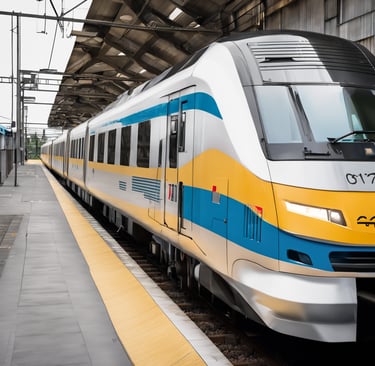World Bank analytics of EU potential for improvement in railway
Source: World Bank
6/26/20242 min read


Western Europe is home to some of the world's densest and most efficient high-speed rail networks, particularly in Germany, France, Italy, and Spain. Seven of the top ten densest high-speed railway networks globally are located in this region, renowned for their safety, service quality, and speed. These railways also produce significantly lower greenhouse gas emissions compared to passenger cars or air travel, contributing positively to environmental sustainability.
However, this efficiency is not uniform across the broader European Union. Many of the 25 EU member states with railway networks fall short of their potential, with less than half offering passenger services at commercial speeds over 200 km/h. A significant portion of routes between medium or large urban centers, particularly those less than 500 km apart where rail could effectively compete with air travel, operate at speeds below 60 km/h. Additionally, connectivity and interoperability across borders are major issues, with more than 5% of medium or large cities on cross-border routes lacking a rail connection.
Eastern EU member states experience notably lower train speeds and greater gaps in city-pair rail connectivity compared to Northwestern and Southern Europe. The freight sector reflects a similar disparity, with rail's share in freight transport dropping to 17% for the bloc in 2021, well below the 44% seen in the US. Despite these challenges, EU countries continue to spend more on roads than rail, often in the form of operational subsidies, which undermines the development of a robust railway infrastructure. Improving railway performance is crucial for the EU's Green Deal, which aims for a net-zero emissions economy by 2050. Transport, responsible for 29% of energy-related GHG emissions, is a key area for decarbonization, with railways generating far fewer emissions than road vehicles and aviation. Enhanced rail investments can reduce road congestion, improve safety, and make cities more livable. To fully harness the potential of railways, the EU must improve performance across the region, enhance cross-border connectivity, and implement context-specific measures, particularly in Eastern member states and accession countries. The World Bank continues to support these efforts, emphasizing competition, financial sustainability, interoperability, and digitalization to maximize the decarbonization potential of railways in Europe.

